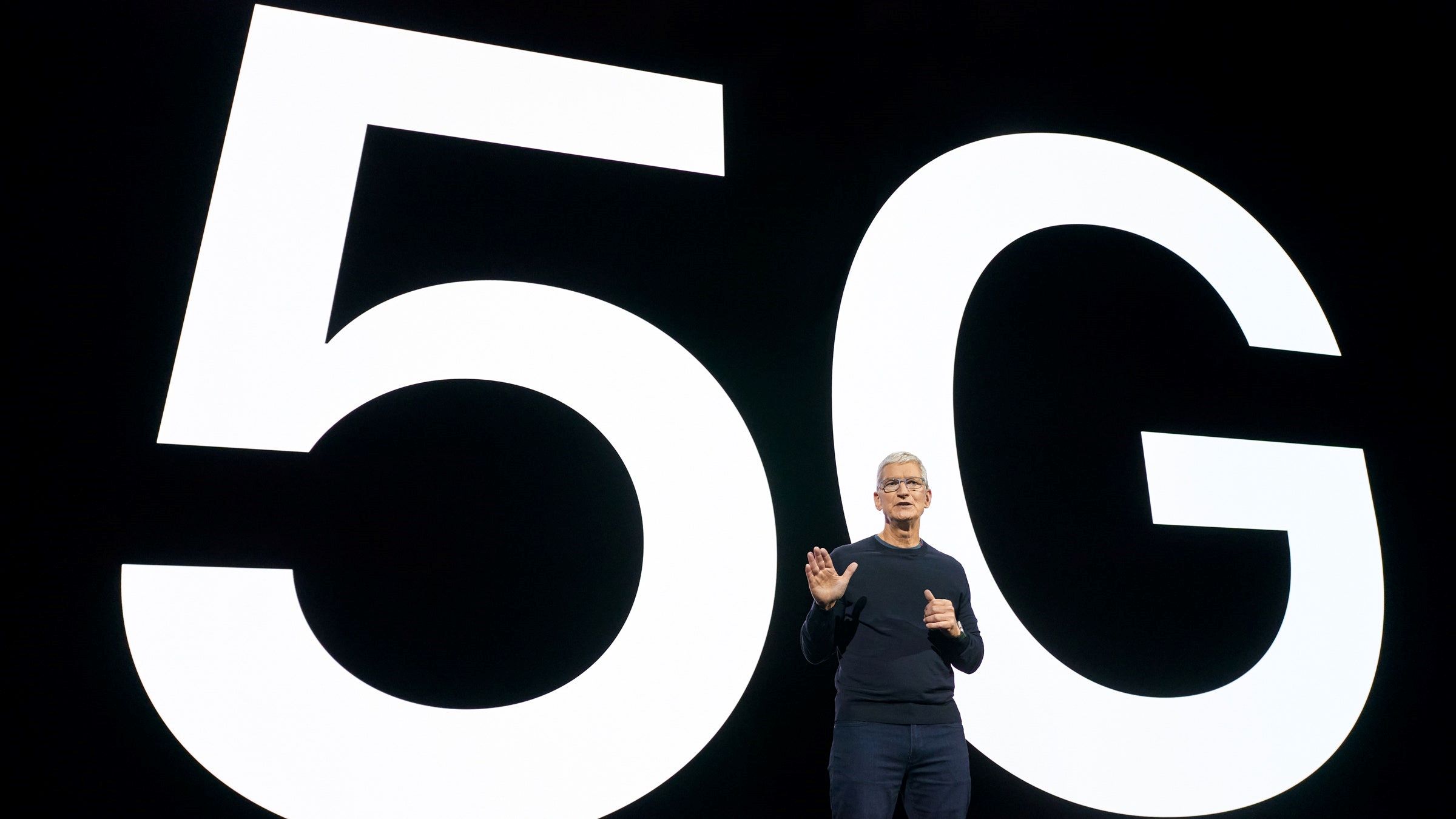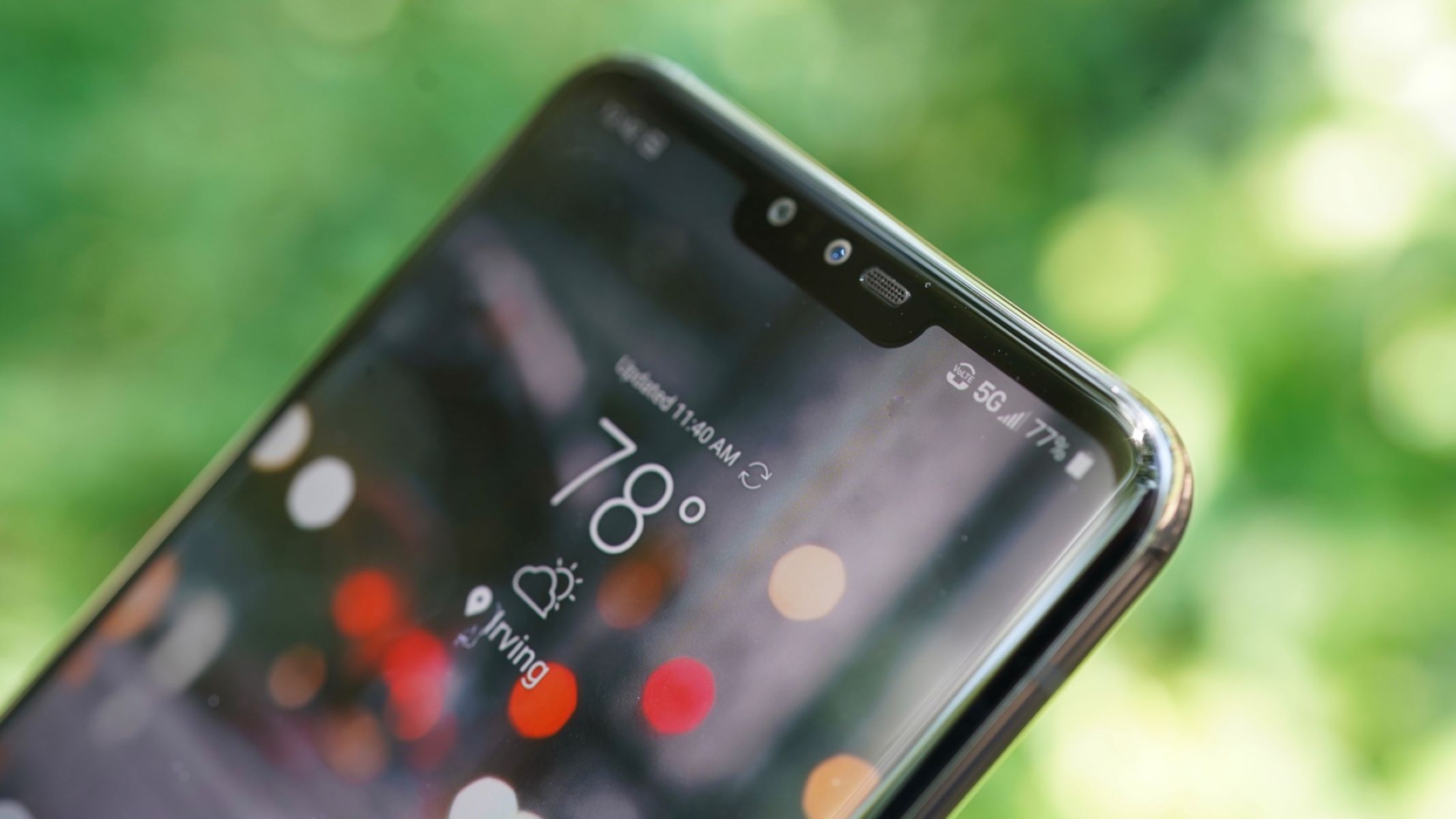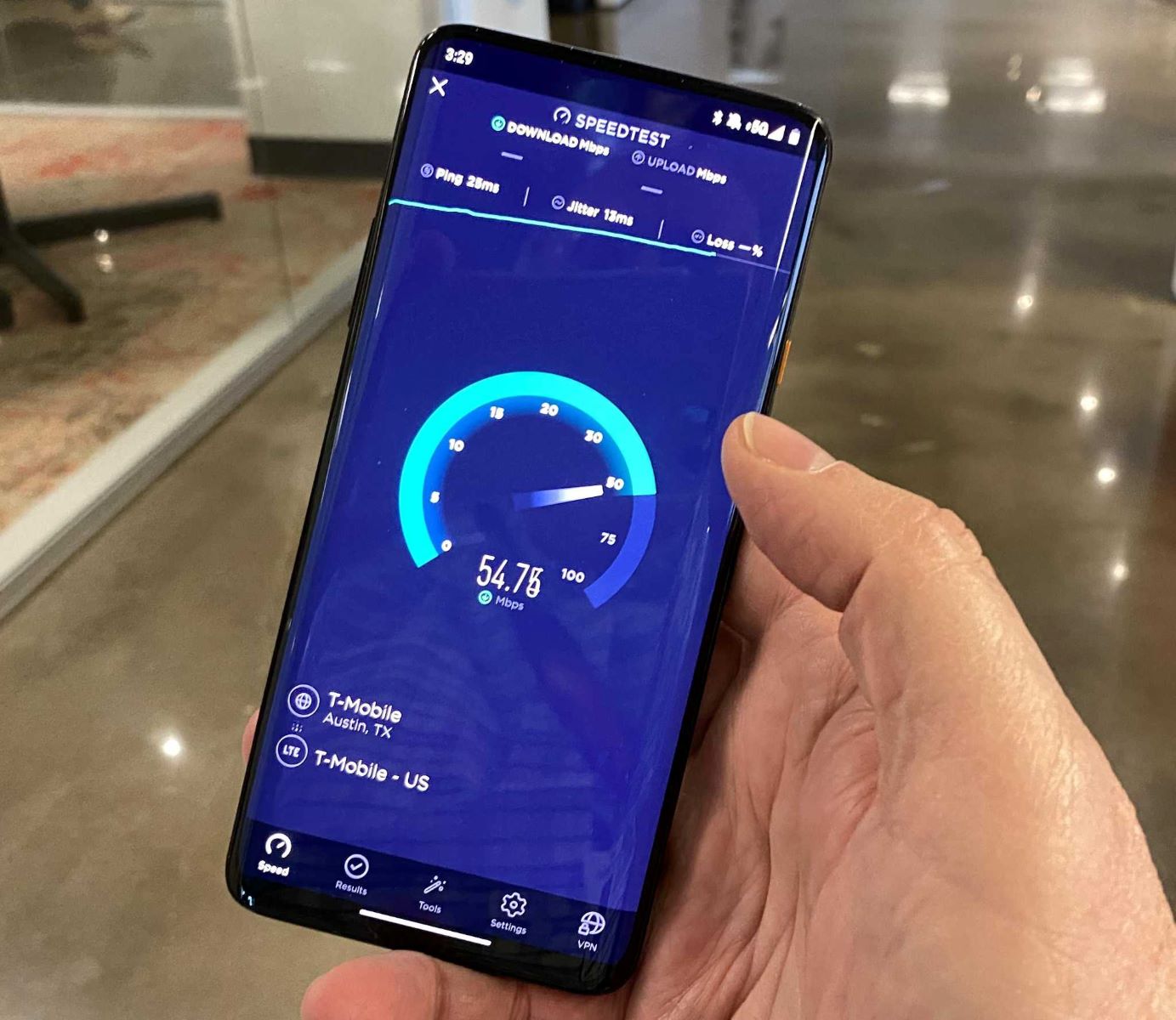Introduction
Since its inception, wireless communication has revolutionized the way we connect and communicate with one another. From the first-generation analogue cellular networks to the high-speed 4G networks of today, each generation has brought advancements in speed, capacity, and connectivity. However, as technology continues to evolve and our reliance on mobile devices grows, there is a need for a new and more advanced wireless network: 5G.
5G, short for the fifth generation of wireless technology, promises to bring even faster data transfer speeds, lower latency, and the ability to connect billions of devices simultaneously. With its potential to transform various industries, such as healthcare, transportation, and manufacturing, 5G is poised to reshape the way we live, work, and interact with the world around us.
But who is behind the creation of this groundbreaking technology? Who are the key innovators, researchers, and organizations driving the development of 5G? In this article, we will delve into the history of wireless communication, explore the need for 5G, and highlight the key players who have played a significant role in its creation.
From the early days of telegraphy to the present era of smartphones and smart devices, the evolution of wireless communication has been driven by a collaboration of engineers, scientists, and companies from all around the world. Join us as we unravel the story of 5G and discover the remarkable individuals and organizations that have fueled its development.
The History of Wireless Communication
The history of wireless communication dates back to the late 19th century when inventors and visionaries began exploring the possibility of transmitting information without the need for physical wires. The discovery of electromagnetic waves by James Clerk Maxwell and the subsequent development of radio waves by Heinrich Hertz laid the foundation for wireless communication as we know it today.
One of the key milestones in wireless communication was the invention of the radio by Guglielmo Marconi in the late 19th century. Marconi’s groundbreaking work in wireless telegraphy made long-distance communication possible, leading to the commercialization of radio broadcasting in the early 20th century.
Advancements in wireless communication continued with the invention of the telephone and the development of mobile telephony. In the mid-20th century, the first-generation cellular networks, such as the Advanced Mobile Phone System (AMPS) in the United States, introduced the concept of cellular communication, allowing multiple users to share a limited number of radio frequencies.
The subsequent generations of wireless networks, namely 2G, 3G, and 4G, brought significant improvements in data transfer rates, allowing for the transmission of complex voice, data, and multimedia content. With each generation, wireless communication became more reliable, accessible, and widespread, ushering in the era of smartphones and mobile internet.
While these advancements have undoubtedly transformed the way we communicate, the exponential growth in internet-connected devices and data consumption has created new challenges. The increasing demand for high-speed connectivity, seamless mobility, and the support of emerging technologies like the Internet of Things (IoT) necessitates the development of a more advanced wireless network: 5G.
5G represents a paradigm shift in wireless communication, introducing revolutionary features such as ultra-low latency and massive machine-to-machine communication. With the potential to enable real-time remote surgeries, autonomous vehicles, and smart cities, 5G is poised to unlock a new era of innovation and connectivity.
Now that we have explored the evolution of wireless communication, let us delve deeper into the specific need for 5G and the challenges it aims to address in the next section.
The Need for 5G
As the world becomes increasingly digital and interconnected, there is a growing demand for faster and more reliable wireless communication. The need for 5G arises from several key factors that push the boundaries of existing networks and technologies.
First and foremost, the explosive growth in data consumption is a driving force behind the development of 5G. With the proliferation of smartphones, streaming services, and IoT devices, the volume of data generated and transmitted is unprecedented. 5G promises to deliver multi-gigabit speeds, allowing for seamless streaming of high-definition videos, real-time gaming, and ultra-fast downloads. This high-speed connectivity will cater to the ever-increasing data demands of businesses and consumers.
Another critical aspect that necessitates 5G is the need for ultra-low latency. While previous generations of wireless technology have achieved impressive speeds, they still suffer from latency delays that hinder certain applications. For instance, autonomous vehicles require real-time communication with other vehicles and infrastructure to operate safely and efficiently. With its ultra-low latency capabilities, 5G can enable near-instantaneous communication, paving the way for autonomous driving, remote surgeries, and time-critical applications.
The massive machine-to-machine communication is another area where 5G excels. With the advent of the IoT, billions of devices are expected to connect and communicate with one another, creating a web of interconnectivity. However, current networks struggle to handle such a vast number of connections simultaneously. 5G leverages advanced techniques, such as network slicing and beamforming, to enable massive machine-to-machine communication and support the IoT infrastructure.
Furthermore, 5G aims to address the issue of network congestion. In densely populated areas or during large-scale events, traditional networks often face congestion, resulting in reduced speeds and dropped connections. With its increased capacity and improved spectrum efficiency, 5G can provide a seamless and uninterrupted experience in even the most crowded environments, ensuring a reliable and high-quality connection for all users.
Lastly, 5G is expected to drive innovation across various industries. From healthcare and transportation to manufacturing and entertainment, the advanced capabilities of 5G open up new possibilities and enable the development of innovative applications. Telemedicine, smart cities, and augmented reality are just a few examples of the transformative potential of 5G technology.
As we can see, the need for 5G arises from the increasing demand for faster speeds, lower latency, massive machine-to-machine communication, improved network capacity, and the drive for innovation in various sectors. Now, let’s explore the standards, organizations, and institutions that have played a pivotal role in shaping the development of 5G.
Standards and Organizations
The development and deployment of 5G technology require the establishment of international standards and the collaboration of various organizations. This ensures interoperability, reliability, and uniformity across different networks and devices. Several key organizations and standards bodies have played a pivotal role in shaping the roadmap of 5G.
One of the prominent organizations in the field of telecom standards is the International Telecommunication Union (ITU), a specialized agency of the United Nations. The ITU defines global standards for telecommunication technologies, including 5G. They have set the groundwork for 5G through their IMT-2020 vision, which outlines the key requirements and performance goals of this next-generation technology.
The 3rd Generation Partnership Project (3GPP) is another crucial organization responsible for the development of telecommunications standards. Comprising multiple telecommunications standardization bodies, the 3GPP collaboratively works towards the evolution of mobile communication technologies. They have been instrumental in developing the technical specifications for 5G, ensuring global compatibility and interoperability.
Other notable organizations involved in the development of 5G standards include the Institute of Electrical and Electronics Engineers (IEEE), the Internet Engineering Task Force (IETF), and the GSMA, an association of mobile network operators. These organizations contribute their expertise and work together to define the technical specifications and protocols necessary for the successful deployment of 5G networks.
Standardization efforts for 5G have gone beyond organizations to include various research institutions and universities. These academic institutions contribute to the development of 5G through extensive research and collaboration with industry partners. Institutions such as the Massachusetts Institute of Technology (MIT), Stanford University, and the University of California, Berkeley, have been at the forefront of 5G research, exploring new technologies and architectures to enhance the capabilities of 5G networks.
In addition to the standards bodies and research institutions, leading telecommunications companies have also played a significant role in driving the development and deployment of 5G. Companies like Ericsson, Nokia, Huawei, Samsung, and Qualcomm have invested heavily in research and development to bring 5G technology to fruition. Their expertise in network infrastructure, chipsets, and communication technologies has been crucial in shaping the 5G landscape.
Overall, the establishment of international standards and collaboration among organizations have paved the way for the development of 5G technology. Through the efforts of standards bodies, research institutions, and telecommunications companies, 5G has become a reality, poised to transform industries and propel us into the era of the Internet of Things.
Research Institutions and Universities
Research institutions and universities are at the forefront of technological advancements, driving innovation and contributing to the development of 5G. These institutions play a crucial role in conducting cutting-edge research, fostering collaboration, and training the next generation of experts in wireless communication.
One notable research institution that has significantly contributed to 5G development is the Fraunhofer Society, based in Germany. The Fraunhofer Society is known for its extensive research in various fields, including communication systems. They have conducted research on advanced wireless technologies, such as millimeter-wave communication and Massive MIMO (Multiple-Input Multiple-Output), which are key components of 5G networks.
Another renowned institution in the field is the National Institute of Standards and Technology (NIST) in the United States. NIST has been actively involved in research and standardization efforts related to 5G technology. Their expertise in wireless communications and network security has contributed to the development of 5G standards and protocols.
Leading universities around the world have also played a pivotal role in advancing 5G technology. Institutions such as Stanford University, Massachusetts Institute of Technology (MIT), and Imperial College London have made significant contributions through their research and collaboration with industry partners. These universities have established dedicated research centers and labs that focus on 5G technologies, aiming to push the boundaries of wireless communication.
In addition, several collaborative research projects have brought together multiple universities and research institutions to foster innovation in 5G. One such project is the METIS (Mobile and wireless communications Enablers for the Twenty-twenty Information Society) project, funded by the European Commission. METIS aimed to develop key technological components for 5G networks, including network architecture, spectrum utilization, and interference management.
Moreover, universities contribute to 5G development through training and education. They offer specialized programs and courses that equip students with the skills and knowledge required for working on 5G technologies. By nurturing young talents, universities are actively shaping the future of wireless communication.
Overall, research institutions and universities play a vital role in advancing 5G technology through their research efforts, collaboration with industry partners, and education initiatives. Through their contributions, they are shaping the landscape of wireless communication, paving the way for the deployment of 5G networks and the realization of its transformative potential.
Leading Telecommunications Companies
Telecommunications companies have been at the forefront of the development and deployment of 5G technology. These industry leaders play a crucial role in driving innovation, investing in research and development, and building the necessary infrastructure to realize the full potential of 5G.
Ericsson, a Swedish telecommunications giant, has been a key player in shaping the 5G landscape. They have been actively involved in standardization efforts and have made significant contributions to the technical specifications of 5G. Ericsson has also conducted extensive research and development, focusing on areas such as network architecture, spectrum management, and network optimization to ensure the seamless deployment of 5G networks worldwide.
Nokia, another prominent player in the telecommunications industry, has been actively involved in the development and commercialization of 5G technologies. Their expertise in network infrastructure, software, and services has contributed to the development of 5G solutions that enable enhanced connectivity, lower latency, and massive machine-to-machine communication. Nokia has partnered with various operators and organizations to deploy 5G networks and drive digital transformation across industries.
Huawei, a Chinese multinational networking and telecommunications equipment company, has also made significant strides in the 5G arena. Renowned for their expertise in telecommunications infrastructure, Huawei has been instrumental in developing cutting-edge technologies and solutions for 5G networks. They have made significant contributions to 5G standardization and have conducted extensive field trials to validate the performance and capabilities of their 5G solutions.
Samsung, a leading consumer electronics and telecommunications company, has been actively involved in 5G research and development. Leveraging their expertise in mobile devices, semiconductor technology, and network infrastructure, Samsung has contributed to the development of 5G chipsets, devices, and network solutions. Samsung’s 5G devices and infrastructure are paving the way for enhanced mobile experiences and enabling the realization of the Internet of Things (IoT) ecosystem.
Qualcomm, a prominent semiconductor and telecommunications equipment company, has been driving innovation in 5G technology. Through their research and development efforts, Qualcomm has developed advanced chipsets and technologies that power 5G networks and devices. Their contributions to 5G standardization and their collaborations with various industry stakeholders have been instrumental in advancing the deployment and adoption of 5G technology.
These are just a few examples of the leading telecommunications companies that have dedicated significant resources to the development of 5G technology. Their investments in research, standardization, and infrastructure development are accelerating the deployment of 5G networks globally and revolutionizing the way we connect, communicate, and interact with the world around us.
Key Innovators and Scientists
The development of 5G technology is driven by the vision and ingenuity of innovators and scientists who have dedicated their expertise and efforts to push the boundaries of wireless communication. These key individuals have made significant contributions to the research, development, and standardization of 5G, shaping its future and enabling its transformative potential.
One notable innovator in the field of 5G is Dr. Theodore S. Rappaport, a renowned wireless communications researcher and professor at New York University. Dr. Rappaport has been at the forefront of research on millimeter-wave wireless communication systems, which is a fundamental component of 5G networks. His work has laid the foundation for the use of high-frequency bands in 5G, enabling faster data transfer and higher capacity.
Dr. Andrea Goldsmith, a professor at Stanford University, is another key contributor to the development of 5G technology. She has conducted extensive research on wireless communication and has made significant contributions to the field of multiple-antenna systems, which are crucial in achieving the high data rates and capacity promised by 5G. Dr. Goldsmith’s work has influenced the design and optimization of 5G networks.
Dr. Gerhard Fettweis, a professor at Dresden University of Technology, has been instrumental in the development of 5G systems. His research focuses on wireless communications, particularly in the areas of massive MIMO and interference management, which are key technologies in 5G networks. Dr. Fettweis’ work has contributed to the efficient utilization of spectrum and the improvement of 5G network performance.
Dr. Mischa Dohler, a professor at King’s College London, has made significant contributions to 5G research, specifically in the field of industrial applications and the Internet of Things (IoT). His research explores the integration of 5G networks with autonomous systems, smart cities, and industrial automation. Dr. Dohler’s work has highlighted the potential of 5G in enabling the next generation of industrial and IoT applications.
In addition to these individual innovators, various scientific teams and research institutions have played a vital role in the advancement of 5G. These include the Wireless @ Virginia Tech research group, Aalto University’s Centre for Wireless Communications, and the University of Bristol’s Communication Systems and Networks Group. These teams have contributed to cutting-edge research, experimental trials, and the development of innovative solutions and technologies for 5G.
Overall, the contributions of key innovators and scientists have been instrumental in shaping the evolution of 5G technology. Their research, insights, and dedication have paved the way for the development and deployment of 5G networks, propelling us towards a new era of connectivity and technological progress.
Conclusion
5G technology is set to revolutionize the way we connect, communicate, and interact with the world around us. From the history of wireless communication to the need for faster speeds, lower latency, and massive machine-to-machine communication, the development of 5G has been driven by a collaboration of key players and experts from various sectors.
Standards bodies, such as the ITU and the 3GPP, have played a crucial role in establishing global standards and protocols for 5G, ensuring interoperability and compatibility across networks. Research institutions and universities have conducted extensive research, pushing the boundaries of wireless communication and exploring new technologies and applications for 5G.
Leading telecommunications companies have invested in research and development, building the necessary infrastructure and driving the commercialization of 5G technology. Meanwhile, key innovators and scientists have contributed their expertise and insights, shaping the technical specifications and advancing the capabilities of 5G networks.
As we move forward, it is essential to recognize that the growth and success of 5G technology will require continued collaboration among industry stakeholders, governments, and regulatory bodies. Addressing challenges related to spectrum allocation, network security, and infrastructure deployment will be crucial to the widespread adoption and realization of 5G’s transformative potential.
With its promise of faster speeds, ultra-low latency, and massive connectivity, 5G opens up new opportunities for various industries, including healthcare, transportation, manufacturing, and entertainment. Real-time remote surgeries, autonomous vehicles, smart cities, and immersive virtual reality experiences are just a glimpse of what 5G can enable.
In conclusion, the development of 5G is a testament to human innovation and ingenuity. It represents the culmination of years of research, collaboration, and technological advancements. As we embrace the era of 5G, we envision a future where connectivity is seamless, intelligent, and transformative, enhancing our lives and propelling us towards new horizons of possibility.
























